NutanixOS 4.7 - what's new is being prepared in a fresh release

Only 4 months have passed since the previous release, 4.6, and here at the partner conference. NEXT in Las Vegas they already told about the features of the new big release, 4.7, which will be “rolled out” in a few days.
Well, once the leadership is honored for the good, to tell publicly at the conference about the features on the eve of the release (usually they don’t praise us very much for this), we’ll tell you about them and we are here in Russia.
But first, let's briefly go over the features that appeared in release 4.6 , quite recently, it would seem:
- "File server" for external users, with support for SMB 2.1 protocol, single namespace, distributed, etc.
- Significant, at times (2.5-1.5 times depending on the I / O profile), the performance increase, including on already installed systems. Even more - on AllFlash, in fact, closely comparing with the top allflash CCD.
- Volume Groups - the ability to connect block LUNs to VM via iSCSI placed in the Nutanix cluster stack
- Self-Service Restore through our Guest Tools, the user can independently access files on the snapshot made by him.
- 1-Click Upgrade for the hardware platform, not interrupting the work of the VM on the cluster, updating the BIOS, BMC, disk firmware, hypervisors and NOS.
- Metro Availability does not require restarting the migrated VM on the DR site.
- Cross-Hypervisor DR, allowing you to support different hypervisors in different data centers (for example, vSphere on production and AHV on DR)
- A technical tool for automated conversion of a hypervisor with all VMs from vSphere to an AHV cluster.
- OpenStack Integration
- Integration into Citrix XenDesktop.
- VM configuration support in clusterinit and sysprep formats
- AHV VLAN Trunking
- A new Prism Pro product that expands Prism (now Prism Element), including services for estimating and predicting resource requirements (location, CPU cores, RAM cores, or cluster nodes), custom dashboards, etc.
- The ability to change the Replication Factor (FTT) level on a live system
- Application-consistent Snapshots
')
So, the other day in the plans we have to roll out a new release in production, 4.7, then, in the beginning of autumn - 4.8. The next big change, which is likely to become "5.0", we expect in the first quarter of 2017.
In this, as well as in the next, 4.8 release, we will have:
Support for the hardware platform upgrade and the transition to Intel Broadwell, which will be completed by the end of the summer, and approximately in the same time frame, will be held by our OEM partners, Dell and Lenovo . This will be our Generation 5 (G5) platform line.
Support for our Special Edition for SMB users , SX-1065 / Xpress.
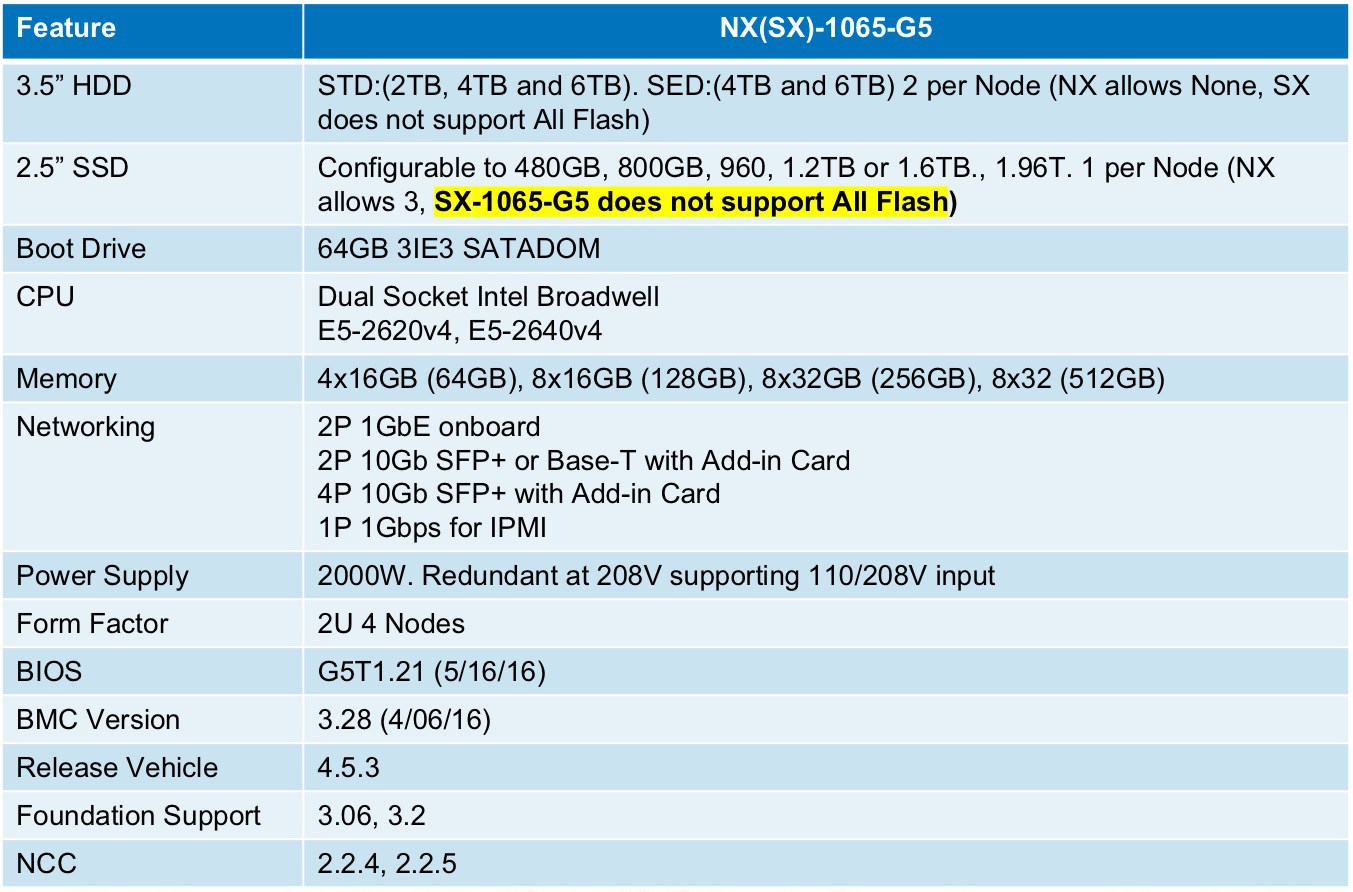
ABS - Acropolis Block Services is a feature that allows you to use the space on the volume of a Nutanix cluster to connect third-party physical hosts "outside", for example, in the case if some individual applications do not support work under the hypervisor, and cannot be migrated to the cluster node environment Nutanix, or licensing restrictions (as well as their price, example - Oracle DB), prevent the transition to Nutanix.
Starting from version 4.5, we have already tested this mechanism, and the form of the so-called Volume Groups, block partitions accessible from inside Nutanix, a VM located in it, connecting to them via iSCSI. This allows you to organize the work of those OS and applications that need block access to the disks (example: MS Exchange, quorum disk in MSCS). Now such a connection to the storage via iSCSI block protocol is possible for third-party hosts.
More about ABS was the other day here: http://blog.in-a-nutshell.ru/abs-acropolis-block-service/
By the way, a rather interesting demonstration of the implementation of the “live” project was shown .
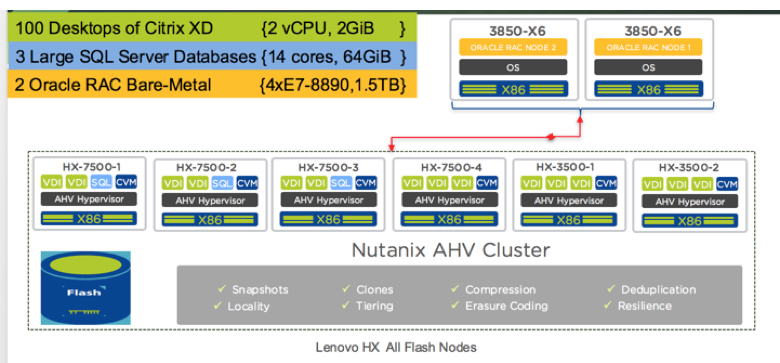
100 VDI desktops in XenDesktop, 3 heavy MS SQL Server databases in a virtual environment (plus any infrastructure canoe like AD) and 2 Oracle RAC hosts connected via ABS.
Performance results:
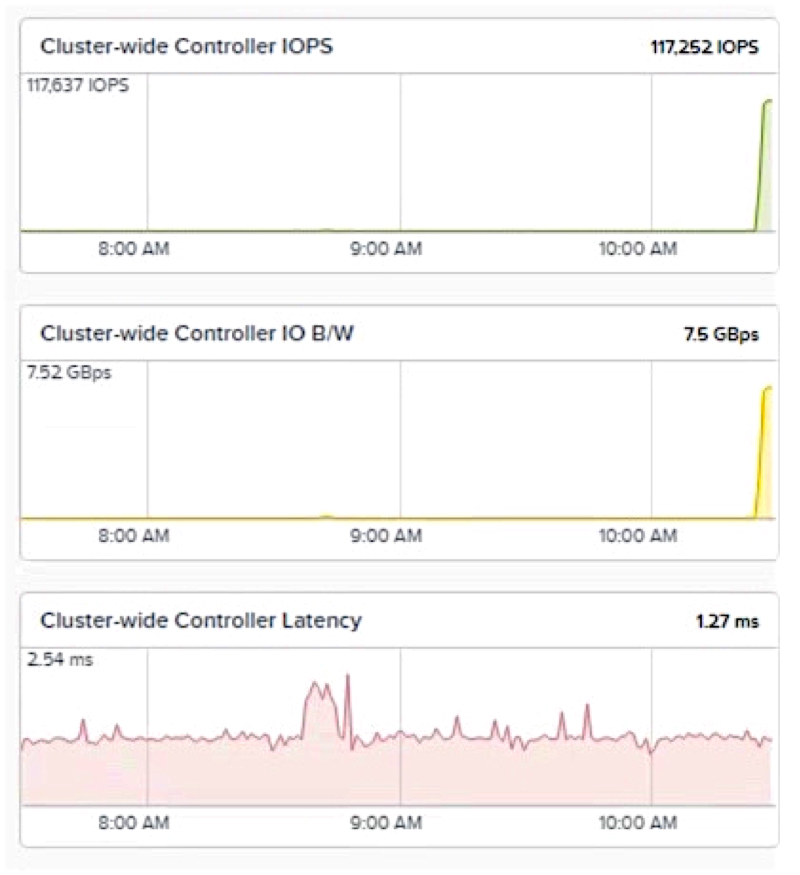
UPD: Video with more details on this demo configuration.
Further development and improvement of AFS — Acropolis File Services — that is, using space on a Nutanix cluster as a NAS service, for example, for highly reliable, distributed storage of user files (for example, home folders and user profiles in a VDI system). Among these new features in AFS is support for TRIM, which facilitates the release of space after deleting files, and thinning storage, improving performance, and gradually adding various features to SMB 2.1.
Today, AFS is suitable for hosting file services with about 10 million stored files per node, which, along with an unlimited number of nodes in a cluster, allows you to use Nutanix as a very large-scale file storage system, for example, for HPC applications.
The solution for the situation of "badly working node" , its so-called. degraded state. Now, Nutanix has a situation where the node in the cluster “works, but it is crooked” (memory failures, corrected by ECC, “flickering” hardware failures, degradation of SSD, etc.) can potentially cause performance problems for the cluster as a whole. If she had completely refused, then, OK, we would “withdraw her from circulation,” and the problem goes away with her. But the situation when “it seems to be alive, but somehow badly alive” was not automatically processed. Now we will have similar behavior monitored, and, based on automatically assigned “points”, we can detect such nodes and accept automatic “conclusions” at the OS level, for example, automatically remove VMs from it and notify the admin as the simplest and obvious.
The Acropolis Hypervisor, our own free hypervisor based on the Linux KVM code, continues to evolve. In the next releases will be (long-awaited) DRS (Dynamic Resource Scheduler) , as well as added affinity and anti-affinity rules .
In release 4.7, our support for Azure Pack for Hyper-V on Nutanix will include our CPS Standard (Cloud Platform System) tool developed in collaboration with Microsoft .
Azure Pack for Hyper-V is a private Azure for your infrastructure on Hyper-V, a self-service portal, and this is all you are used to using Azure on the web.
Deploying the Azure Pack prior to this release was a manual and rather lengthy procedure. Now it is automated.

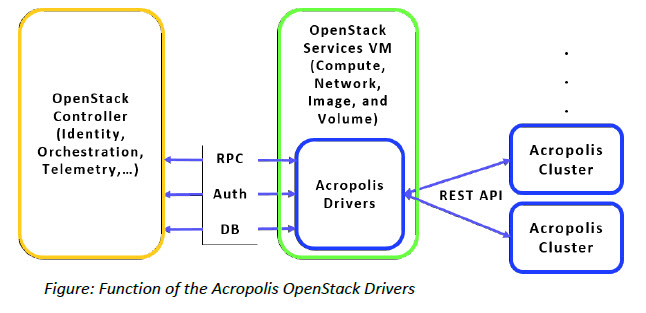
Integration with OpenStack , which appeared in release 4.6 (drivers for Nova, Cinder, Glance and Neutron), will complement the Nutanix Self-service Portal, which will more conveniently implement the “cloud” in a multi-tenant infrastructure, that is, when the “cloud” is based on Nutanix there will be many disparate users, for example, it can be useful for “AWS-like” service providers and hosting providers built using a cloud service. Such users of the service, being isolated from each other, will be able to independently deploy containers for data on dedicated resources, create virtual machines from the template catalog, and integrate the resulting infrastructure into private and hybrid clouds.

Nutanix begins to support Docker in our Acrpolis Container Services. This solution is designed so that you can fully deploy and use Docker in a Nutanix cluster environment.
About the work and support of Docker in Nutanix, I plan to write a separate article. In the meantime, I will mention that this development includes the Acropolis DSF Volume Plugin for Docker and the Docker Machine Driver. In the video you can understand how and what we did.
In 4.7, these functions are only available in the CLI, but in 4.8, integration into Prism will be ready.
In release 4.8, Prism will also include our network connection visualization system in the Nutanix infrastructure, it's easier to show than to describe what it is:
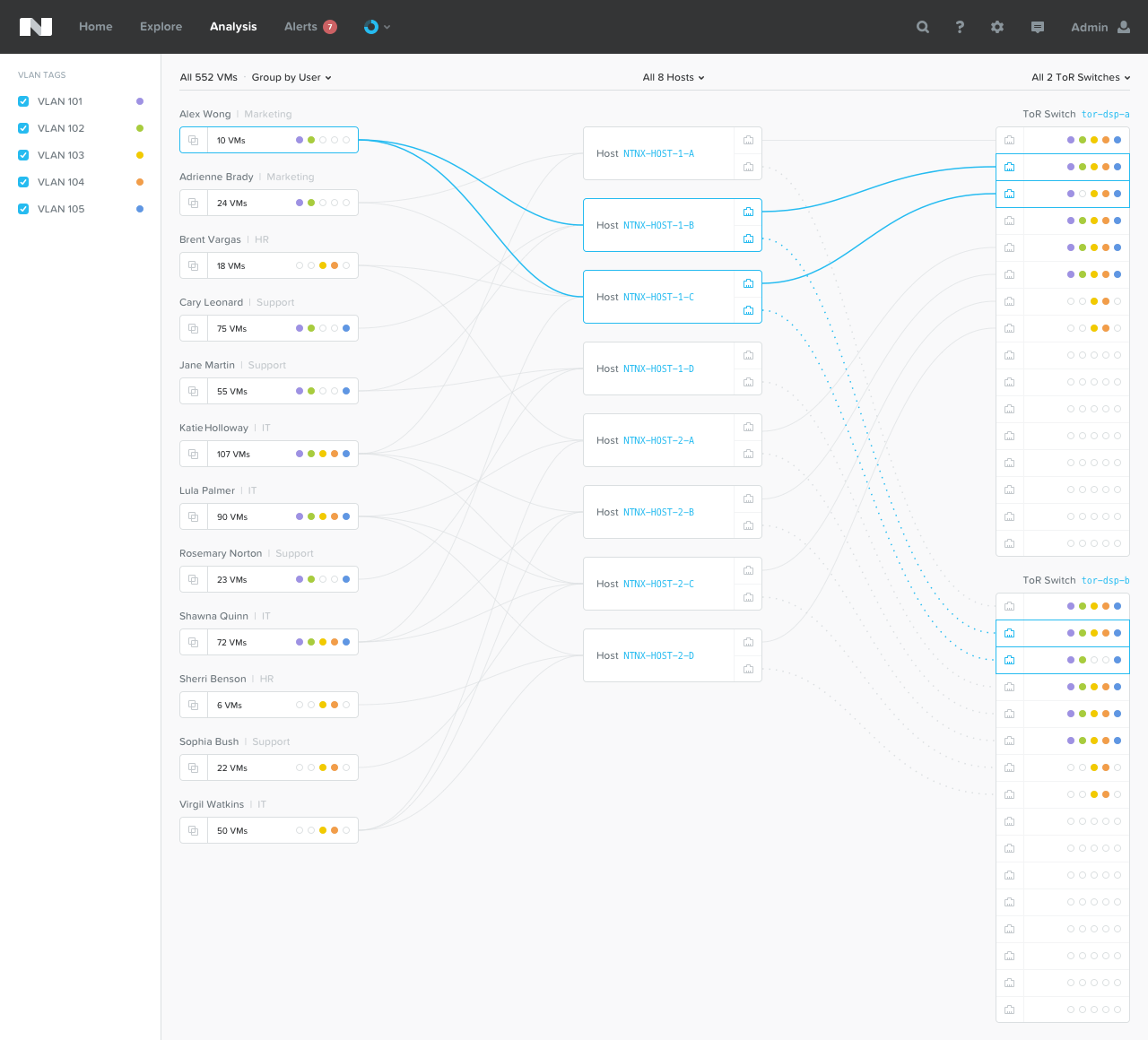
Diagnostic tools will be included in the visualization system to find problems at the network level (high level of lost packets, incorrect MTU configuration, VLAN configuration)
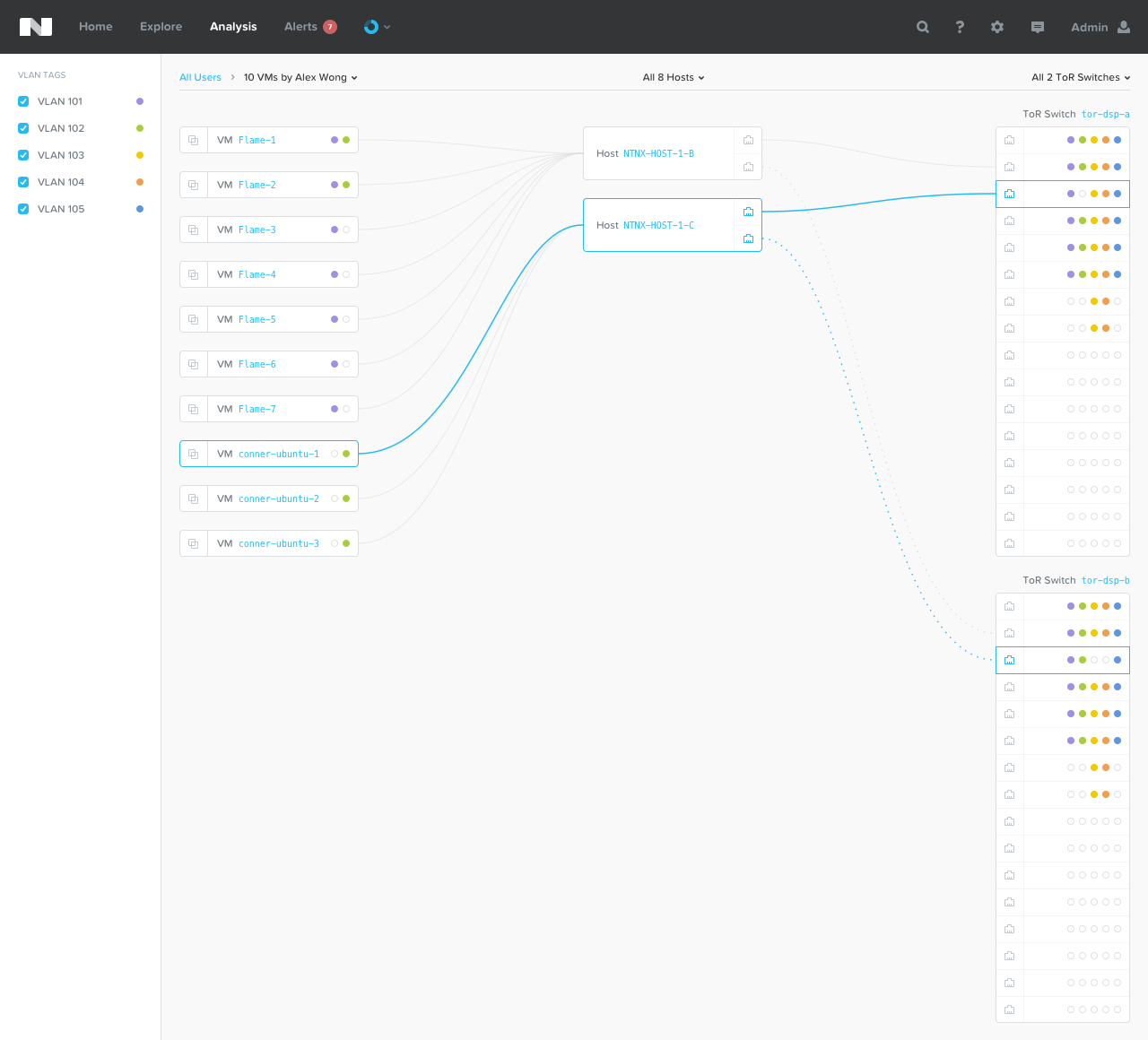
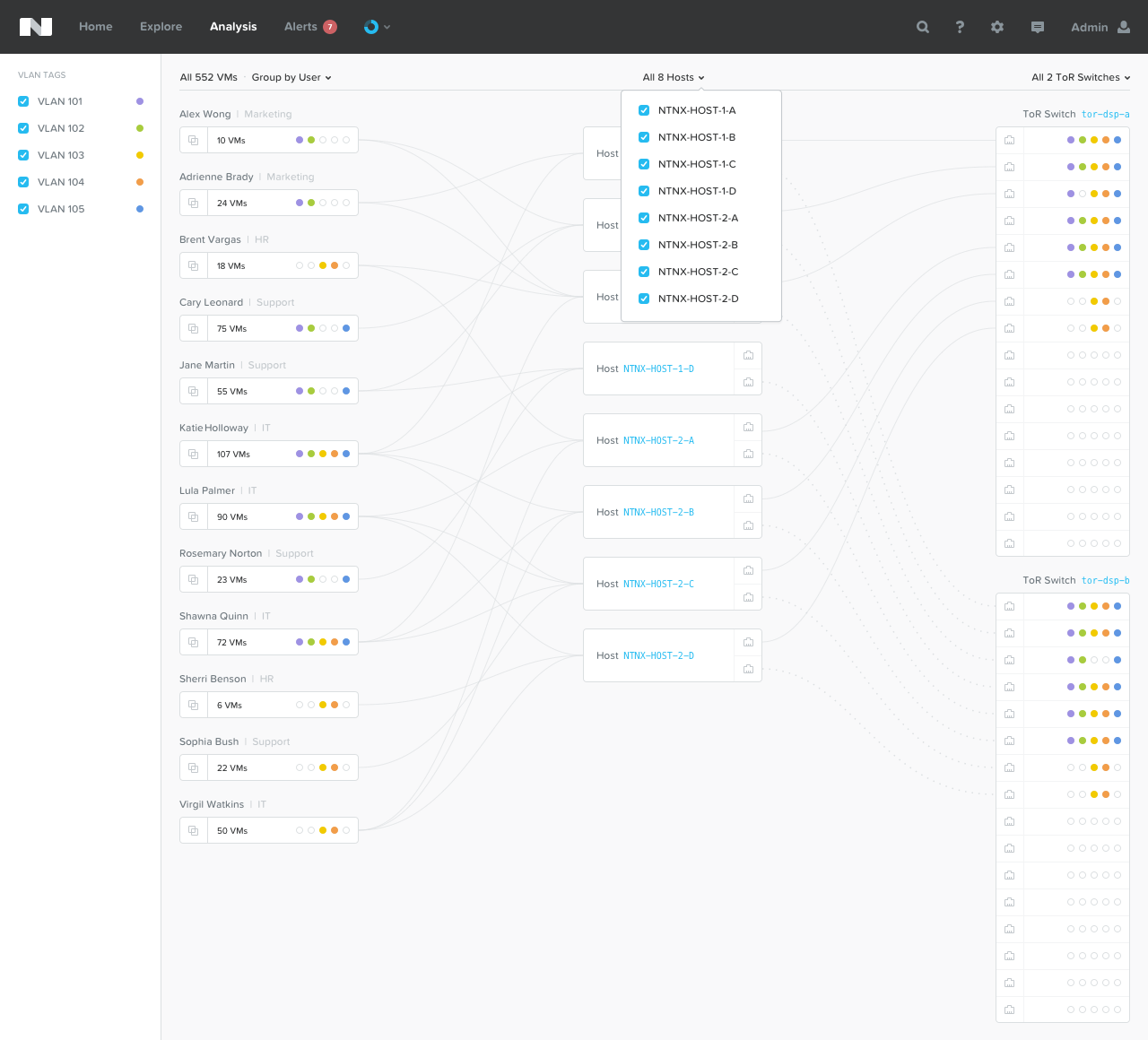
In release 4.8, we also will have an expanded analysis of What-If , allowing the admin to better plan resources. It will help to answer the questions like “What if we deploy another 10 copies of this VM?” Or “What if the load on this database grows by 25% next month?”

So, if you already use Nutanix, wait for the online update via 1-Click, if you are still thinking about it - pay attention to the new and planned features in the next three months.

Source: https://habr.com/ru/post/304156/
All Articles